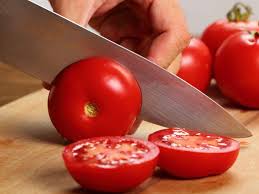Are Tomatoes a Fruit or a Vegetable? The Debate Explained
Tomatoes are one of the most versatile and widely used ingredients in cuisines around the world. Whether in salads, sauces, or salsas, they play a crucial role in a multitude of dishes. Yet, the question of whether tomatoes are a fruit or a vegetable has been a topic of debate for centuries, intriguing both botanists and culinary experts alike.
Botanical Classification: The Tomato as a Fruit
From a botanical perspective, tomatoes are unequivocally classified as fruits. To understand why, it’s essential to delve into the definition of what constitutes a fruit in botanical terms.
Fruits are the mature ovary of a flowering plant, usually containing seeds. They develop from the fertilized ovary of a flower and act as a vessel for seed dispersal.
Tomatoes fit this definition perfectly. They develop from the yellow flowers of the tomato plant, with the seeds nestled inside the fleshy, ripened ovary that we commonly consume. Therefore, by botanical standards, tomatoes are fruits—more specifically, they are classified as berries since they are fleshy fruits without a hard pit and develop from a single flower with one ovary.
This classification aligns tomatoes with other fruits that might surprise some, like cucumbers, zucchinis, and pumpkins, all of which develop from the flowering part of the plant and contain seeds.
Culinary Classification: The Tomato as a Vegetable
While tomatoes are botanically fruits, their culinary use often aligns them with vegetables. In the culinary world, the term “vegetable” is used more loosely, encompassing various plant parts, including leaves (like spinach), roots (like carrots), stems (like asparagus), and yes, fruits like tomatoes. The distinction often comes down to taste and usage in the kitchen.
Tomatoes, with their savory flavor profile, are typically used in main courses, side dishes, and salads rather than in desserts. This savory application is why they are commonly referred to as vegetables in a culinary context.
The culinary distinction is less about scientific accuracy and more about practicality and tradition in the kitchen. Vegetables are generally considered to be parts of plants that are less sweet and more suitable for savory dishes, which perfectly describes the tomato’s role in cooking.
The Legal Classification: A Supreme Court Decision
The debate over whether a tomato is a fruit or a vegetable is not just a matter of scientific curiosity or culinary convention—it even reached the highest court in the United States. In 1893, the U.S. Supreme Court was called upon to settle the matter in the case of Nix v. Hedden.
The case arose because of the Tariff Act of 1883, which imposed import taxes on vegetables but not on fruits. John Nix, a produce importer, argued that since tomatoes are botanically fruits, they should not be subject to the vegetable tax.
However, the Supreme Court ruled that tomatoes should be classified as vegetables for tariff purposes, based on their common culinary use.
The Court’s decision was influenced by the fact that tomatoes are typically served as part of the main course rather than as a dessert, which was the common distinction between fruits and vegetables at the time. This ruling has since solidified the tomato’s status as a vegetable in legal and commercial contexts in the United States.
Why the Distinction Matters
So, why does it matter whether we call a tomato a fruit or a vegetable? The distinction has implications beyond academic debates. For one, it affects agricultural regulations, import tariffs, and even how we think about nutrition. In the culinary world, the distinction can guide how ingredients are used in cooking and what flavors are expected in certain dishes.
Nutritionally, tomatoes are a powerhouse, rich in vitamins C and K, potassium, and the antioxidant lycopene, regardless of whether they are labeled a fruit or a vegetable. Their versatility in both raw and cooked forms makes them a staple in diets worldwide, contributing to their widespread cultivation and consumption.
Conclusion: The Tomato’s Dual Identity
Ultimately, the tomato straddles the line between fruit and vegetable, embodying characteristics of both. Botanically, it is a fruit, developed from the flower of the plant and containing seeds. However, in culinary and legal contexts, it is treated as a vegetable due to its savory flavor and typical use in main dishes.
This dual identity highlights the complexity and richness of the natural world, where strict categories often blur in practice. Whether you think of tomatoes as fruits or vegetables, they remain a delicious and essential part of our diets, offering a unique blend of flavors and nutrients that enhance countless dishes.
So, the next time you slice into a juicy tomato, remember that you’re enjoying a fruit that the world has come to embrace as a vegetable—a perfect blend of nature’s classifications and human tradition.




